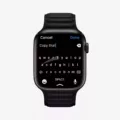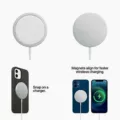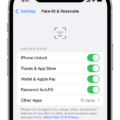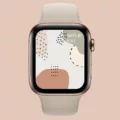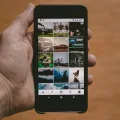The iPhone is an incredibly popular and powerful device that is used by millions of people all over the world. It is known for its sleek design, user-friendly interface, and wide range of features. One of the features that many iPhone users rely on is the auto-lock function, which automatically locks the device after a certain period of inactivity. However, there are times when the auto-lock option may be grayed out and not working properly. In this article, we will explore the possible reasons why this happens and how to fix it.
When the auto-lock option is grayed out on your iPhone, it means that the device is in Low Power Mode. Low Power Mode is a feature that helps conserve battery life by reducing or disabling certain functions on the device. One of the functions that is affected by Low Power Mode is the auto-lock feature. In Low Power Mode, the auto-lock is restricted to 30 seconds to help save power.
To fix the grayed-out auto-lock issue, you simply need to turn off Low Power Mode. This can be done by going to the Settings app on your iPhone and tapping on “Battery”. From there, you will see the option to toggle off Low Power Mode. Once you turn off Low Power Mode, the auto-lock option should no longer be grayed out and you will be able to adjust the auto-lock settings to your desired time interval.
It’s worth noting that if you have Face ID turned on and the iPhone is in front of you, it is expected to see the lock unlock. This is because Face ID uses facial recognition technology to unlock the device when it detects your face. If you want to change the attention settings for Face ID, you can do so by going to Settings, then Face ID & Passcode, and selecting “Require Attention”. From there, you can enable or disable the requirement for attention to unlock the device.
If the auto-lock option is grayed out on your iPhone, it is likely because the device is in Low Power Mode. To fix this issue, simply turn off Low Power Mode in the Settings app. Additionally, if you have Face ID turned on, you may need to adjust the attention settings to require attention for unlocking the device. By following these steps, you should be able to resolve the grayed-out auto-lock problem on your iPhone and regain control over the auto-lock settings.
Why is Your Auto Lock Not Letting You Press It?
The reason why you are unable to press the Auto Lock option on your device is likely due to the fact that your iPhone is currently in Low Power Mode. When Low Power Mode is activated, certain features and settings are restricted to conserve battery life.
In the case of Auto Lock, which controls the length of time before your device automatically locks and turns off its display, it is limited to a maximum of 30 seconds while Low Power Mode is enabled. This shorter time period helps to minimize power consumption.
To adjust the Auto Lock setting to your preferred duration, you will need to disable Low Power Mode. You can do this by going to the Settings app on your iPhone, selecting Battery, and then toggling off the Low Power Mode option.
Once Low Power Mode is turned off, you should be able to access and modify the Auto Lock setting according to your desired time interval. Simply navigate to the Display & Brightness section within the Settings app, select Auto Lock, and choose the desired time duration from the available options.
If the Auto Lock option is grayed out and unresponsive on your iPhone, it is because your device is currently in Low Power Mode, which limits the maximum Auto Lock duration to 30 seconds. Disable Low Power Mode in the Battery settings to regain control over the Auto Lock setting and adjust it to your preference.
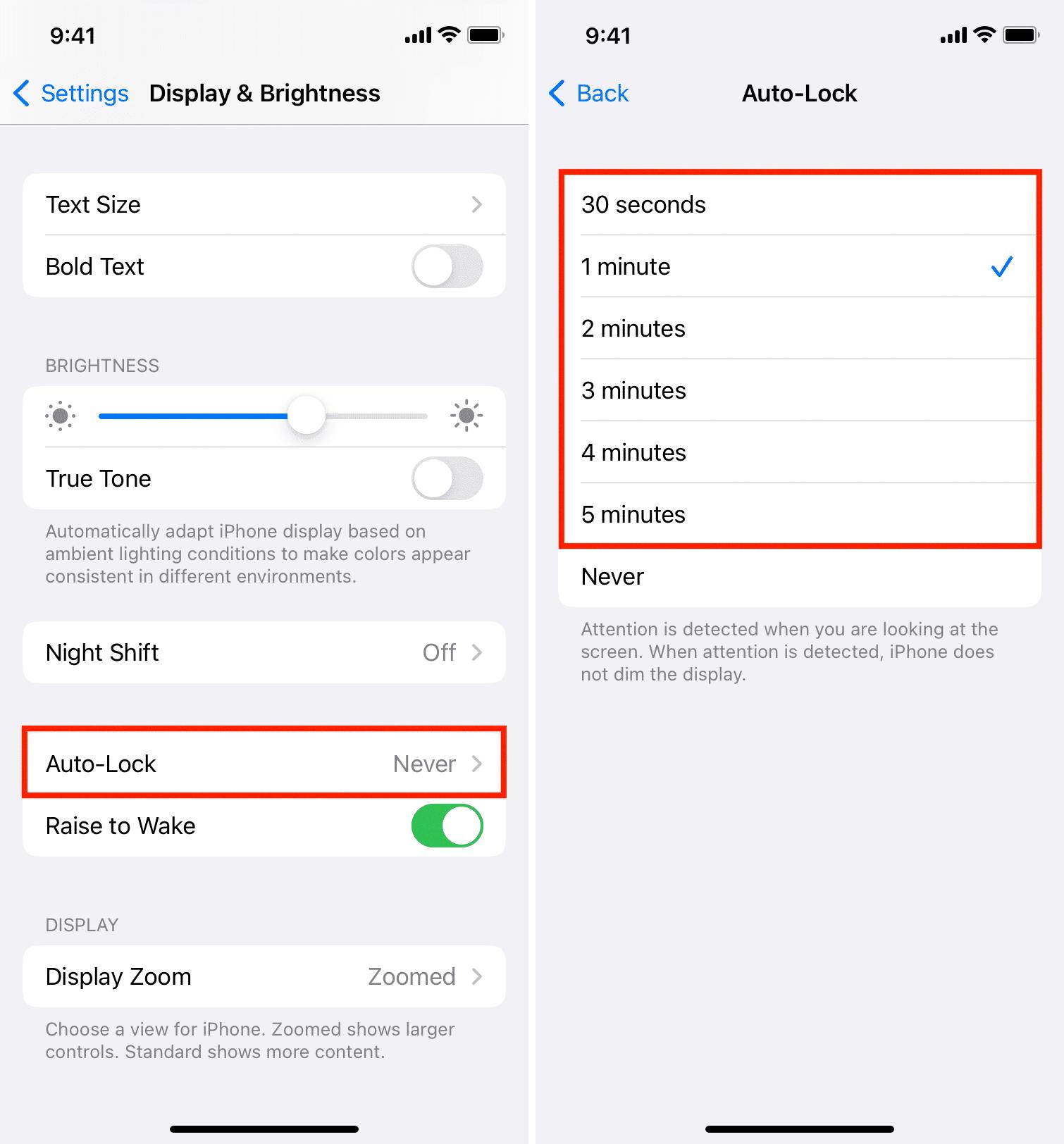
Why is Your iPhone Auto Lock Stuck On 30 Seconds?
The Auto-Lock feature on your iPhone allows you to set a time limit for the screen to automatically lock and turn off when the device is idle. However, sometimes this feature may appear stuck on 30 seconds, and you may wonder why.
The most common reason for Auto-Lock being stuck on 30 seconds is the activation of Low Power Mode. When Low Power Mode is enabled on your iPhone, it helps to conserve battery life by reducing or disabling certain features. One of the effects of Low Power Mode is that it sets the Auto-Lock time to a fixed value of 30 seconds, regardless of your previous settings.
To fix the issue and regain control over your Auto-Lock settings, you need to disable Low Power Mode. Here’s how you can do it:
1. Open the Settings app on your iPhone.
2. Scroll down and tap on “Battery.”
3. You will see the “Low Power Mode” option. If it is enabled, you will see a green toggle switch next to it.
4. Tap on the toggle switch to turn off Low Power Mode. The switch will turn gray when it’s disabled.
Once you have disabled Low Power Mode, you should be able to access and modify the Auto-Lock settings on your iPhone. Simply go back to the “Display & Brightness” or “Display & Touch” section in the Settings app, depending on your iOS version, and adjust the Auto-Lock time according to your preference.
If the Auto-Lock option is still grayed out even after disabling Low Power Mode, there may be another underlying issue with your device. In such cases, you may want to try restarting your iPhone or updating to the latest iOS version to see if that resolves the problem. If the issue persists, it’s recommended to contact Apple Support for further assistance.
Why is Your iPhone Always Unlocked?
If your iPhone is always unlocked, there could be a few reasons for this:
1. Face ID: If you have Face ID enabled and your iPhone is constantly unlocking without you intending it to, it might be due to the sensitivity of the facial recognition feature. Face ID is designed to recognize your face and unlock your device when it detects your attention. However, if the attention settings are not properly adjusted, it may unlock even when you’re not actively looking at it.
2. Attention Settings: You can adjust the attention settings for Face ID in your device’s settings. By going to Settings > Face ID & Passcode, you can change the attention settings to require attention. This means that your iPhone will only unlock when it detects that you are actively looking at the screen. By enabling this feature, you can ensure that your iPhone doesn’t unlock when you’re not paying attention.
3. Environmental Factors: Sometimes, environmental factors can interfere with Face ID recognition. If you are in a dimly lit area or if there are strong reflections or glare on your face, it may affect the accuracy of Face ID. In such cases, your iPhone may unlock more easily or struggle to recognize your face properly.
To address these issues, you can try the following:
– Adjust the attention settings in the Face ID & Passcode settings to require attention for unlocking.
– Make sure you are in a well-lit area when trying to unlock your iPhone with Face ID.
– Remove any screen protectors or cases that may be obstructing the TrueDepth camera system, which is responsible for Face ID recognition.
– Ensure that your face is properly framed within the screen when attempting to unlock your iPhone.
By taking these steps, you can improve the accuracy of Face ID and prevent your iPhone from unlocking unintentionally.
Conclusion
The iPhone offers a range of useful features and functionalities, including the Auto-Lock option. However, if you find that the Auto-Lock option is grayed out on your device, it is likely because your iPhone is in Low Power Mode. This mode restricts the Auto-Lock setting to 30 seconds in order to conserve battery life. To fix this issue, simply turn off Low Power Mode, and the Auto-Lock option will no longer be grayed out.
Additionally, if you have Face ID enabled on your iPhone, it is normal for the device to unlock when it detects your face in front of it. You can customize your attention settings in the Face ID & Passcode settings to require attention for unlocking. This ensures an added layer of security and prevents the device from unlocking when you’re not actively looking at it.
The iPhone provides a user-friendly experience with various settings and features that can be customized to suit your preferences. By understanding how to manage settings like Auto-Lock and attention requirements, you can optimize your iPhone’s functionality and enhance your user experience.

